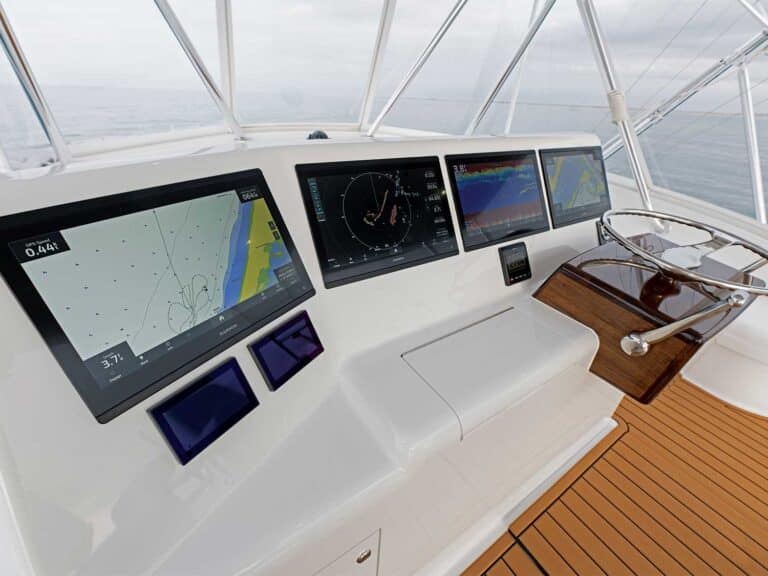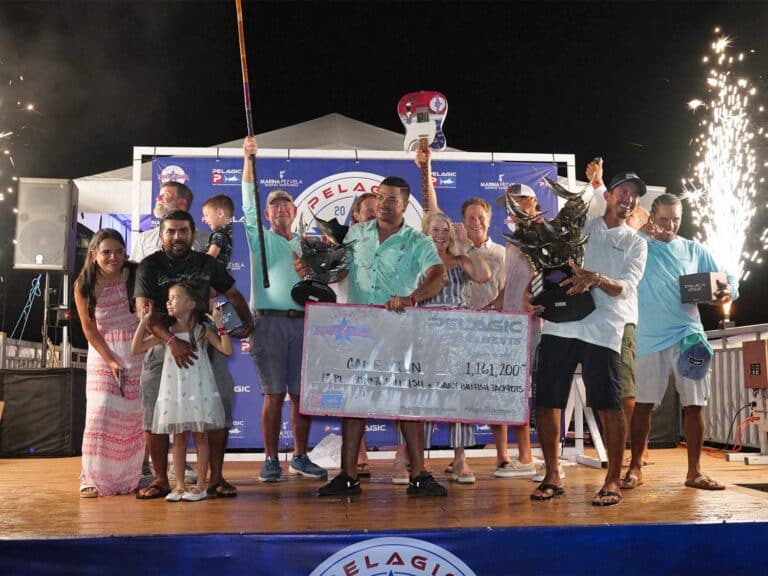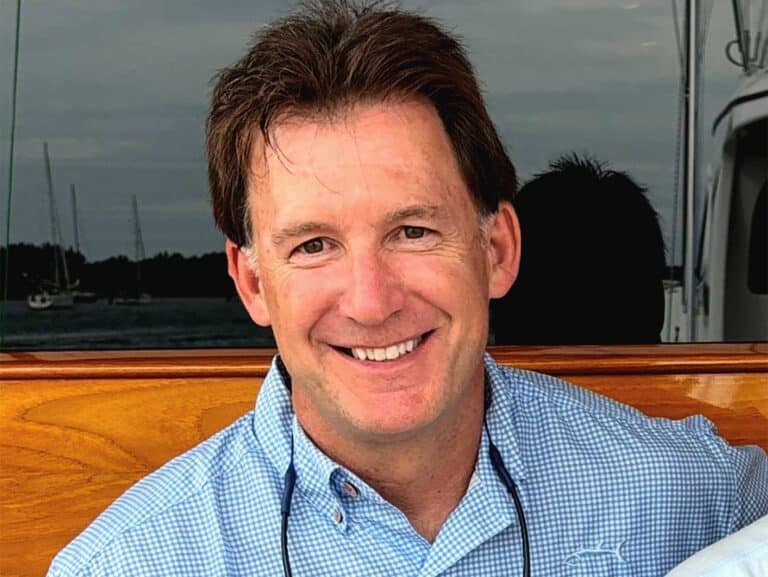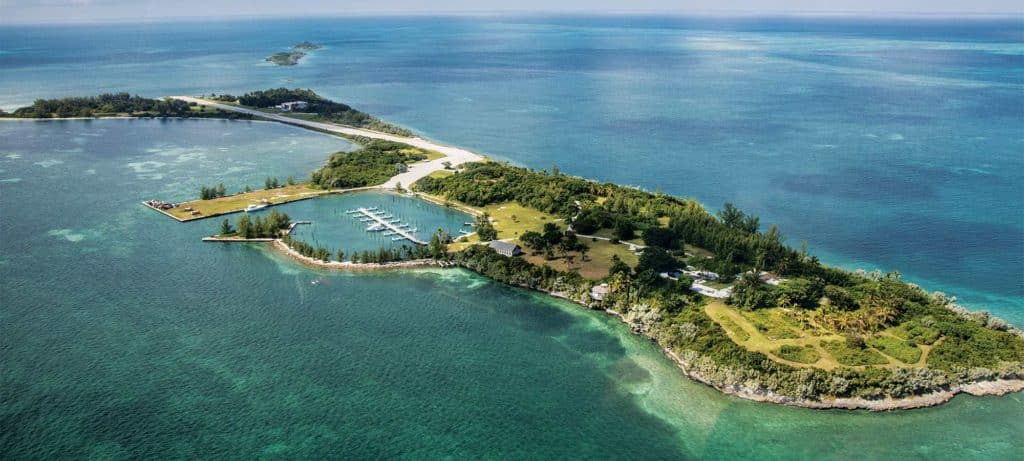
Despite being only about 100 acres in size, Walker’s Cay in the northern Bahamas is one of those iconic sport-fishing destinations that punches well above its weight class. The mere mention of Walker’s brings back fond memories of tournaments such as the Bertram-Hatteras Shootout and the Bahamas Billfish Championship, while others flash back to the glory days of huge blue marlin—some landed, others lost—just a few miles north of the island’s small marina, perched on the edge of the Little Bahama Bank.
The History
Walker’s Cay is about 50 miles northeast of West End, Grand Bahama, and a little more than 100 miles from West Palm Beach, Florida. A lack of natural fresh water kept Walker’s uninhabited for hundreds of years until Florida businessman Buzz Shonnard leased the land from the Bahamian government in 1935, after which he built a small hotel, a 75-slip marina and an airstrip.
With his connections to the American sport-fishing crowd back home in Palm Beach, Shonnard promoted Walker’s Cay as a top destination for the then-burgeoning sport of marlin fishing. After World War II, Bahamas fishing tourism continued to grow; one of the seasonal visitors was another prominent American businessman named Robert Abplanalp, inventor of the plastic aerosol valve for spray cans. In 1968, Abplanalp purchased the lease for Walker’s Cay and continued the island’s development, while also cautiously eyeing the impact on conservation in the waters surrounding it.
Over the next three decades, Walker’s became the hub for sport fishing in the northern Bahamas. Aside from the well-known tournaments, nearly every fishing club in Florida held events there, both inshore and offshore. The angling action was simply phenomenal, from bonefish on the flats to the inshore wrecks and reefs and the offshore drops and humps, where the marlin were thick.
But the glory days never seem to last. Abplanalp died in 2003 at 81; the following year, hurricanes Frances and Jeanne mauled the low-lying Bahamian island, destroying the hotel and severely damaging the marina. Neither were rebuilt, and—aside from a few transient boaters—the island remained essentially deserted for the next 15 years.
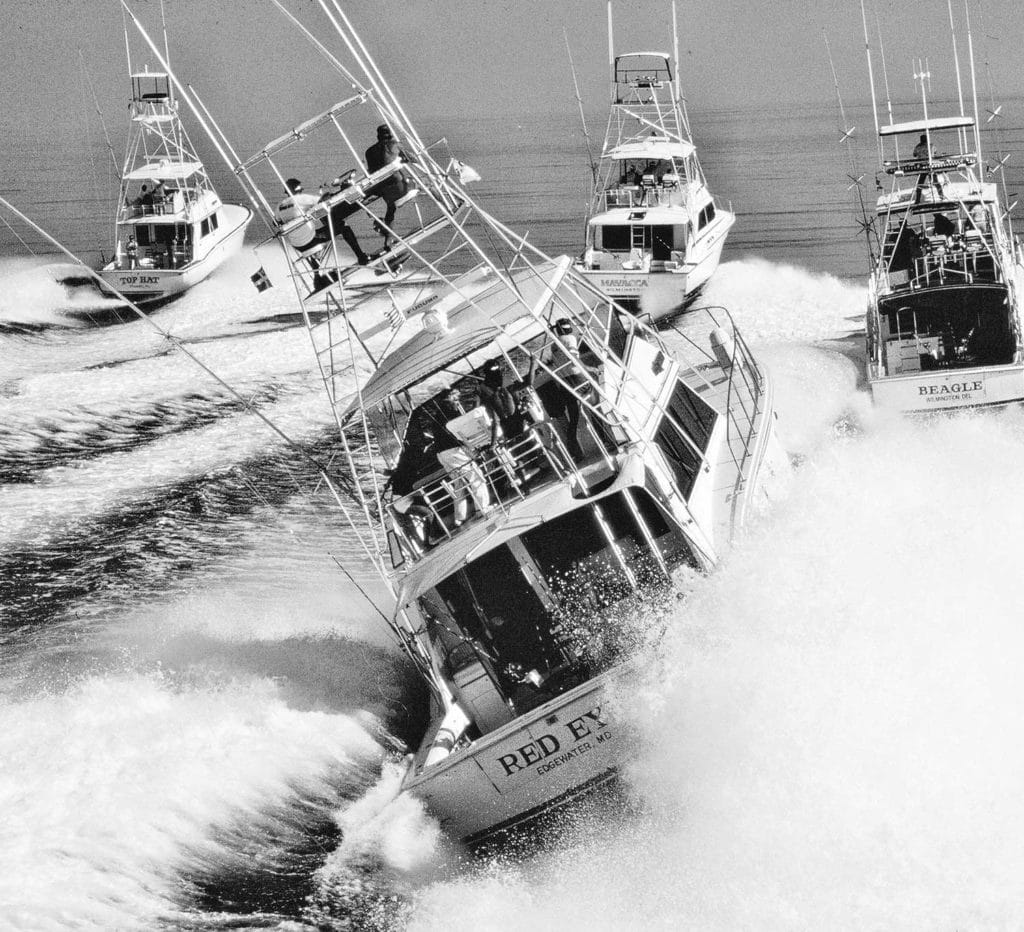
The Modern Era
As a child, Carl Allen always had fond memories of Walker’s Cay. “The Bahamas has been like a second home to me for most of my life,” he says. “One of my very first memories was coming to Walker’s when I was 12. My family would always stop there on our way to other places in the Bahamas, and while I love the other islands, I always wanted to spend more time in Walker’s, exploring and fishing. And I always thought that one day I’d love to own Walker’s Cay.”
Little did he know that it would become a self-fulfilling prophecy. Allen, owner of Texas-based Allen Exploration, announced in 2018 that he and his family had purchased the island. Even more interesting were his plans for restoration.
Let’s be clear: with Allen’s considerable financial resources, he could have turned Walker’s Cay into his own private enclave, with No Trespassing/No Fishing signs posted around the perimeter. But he has fond memories of the way Walker’s Cay used to be, and that’s what drives his imagination today.
“I’d like to return the island to its former glory,” he says. “We have plans to completely rebuild the marina, including dredging to 14 feet throughout, as well as possibly building a small hotel and restaurant and a few other things.”
He is clear that the marina will remain open to the public, and that Walker’s Cay will once again host big-game tournaments for visiting anglers, as it had done for so many years in the past.
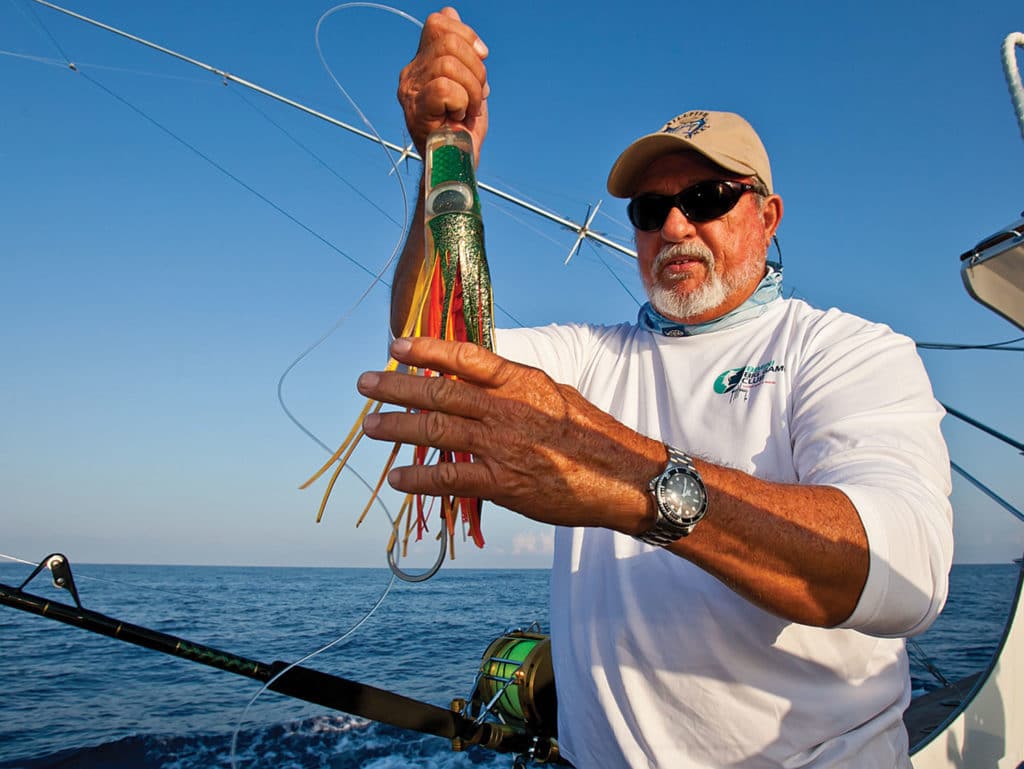
Voices from the Past
One of the most notable captains fishing out of Walker’s Cay is Billy Black, who chartered Duchess there for 30 years and who considered the Abplanalp family to be more kin than employers.
“After Vietnam, I went there for the fishing, and it was incredible,” he says. “We’ve caught plenty of 600- to 900-pound blue marlin, at least three or four over 1,000 pounds, had some terrific bluefin tuna fishing, plenty of bottomfish—you name it.” At one point, he held the Bahamian record for wahoo at 124 pounds, the ladies Bahamian record blue marlin at 694 pounds and plenty of others, fishing out of his adopted home.
“One part I love about Walker’s is that the edge is so close,” Black says. “It’s only a 10-minute run to the drop. The tuna humps in 1,200 to 3,000 feet of water are 12 or 13 miles away.”Aside from the fishing, Black also notes that Walker’s was always a family-oriented destination.
“Abplanalp was quite a gentleman, always interested in the well-being of others,” he reports. “My sons and daughter were all married in the little chapel there at Walker’s, and a big piece of my heart is still there on that island. It was a family island then, and it sounds like it will be a family island once again with the new ownership.”
Black still charters Duchess today from Stuart, Florida, and fishes out of Old Bahama Bay and Blue Marlin Cove in the Bahamas, with hopes of one day returning to Walker’s Cay to fish those historic waters.
Another notable voice from the past belongs to none other than Flip Pallot, whose television show, Walker’s Cay Chronicles, helped put the small Bahamian island on the worldwide fishing map. Along the way, he also developed a relationship with the Abplanalp family and fell in love with the island itself.
“It’s a romantic destination,” he says. “Part of it is the geography, being close enough to Florida that it’s easily accessible, and with a great variety of fishing. All of the top captains spent time at Walker’s Cay at one time or another, including guys like Skip Smith, Gary Stuve and a host of others. Walker’s was the glue that held the northern Bahamas together for decades.”
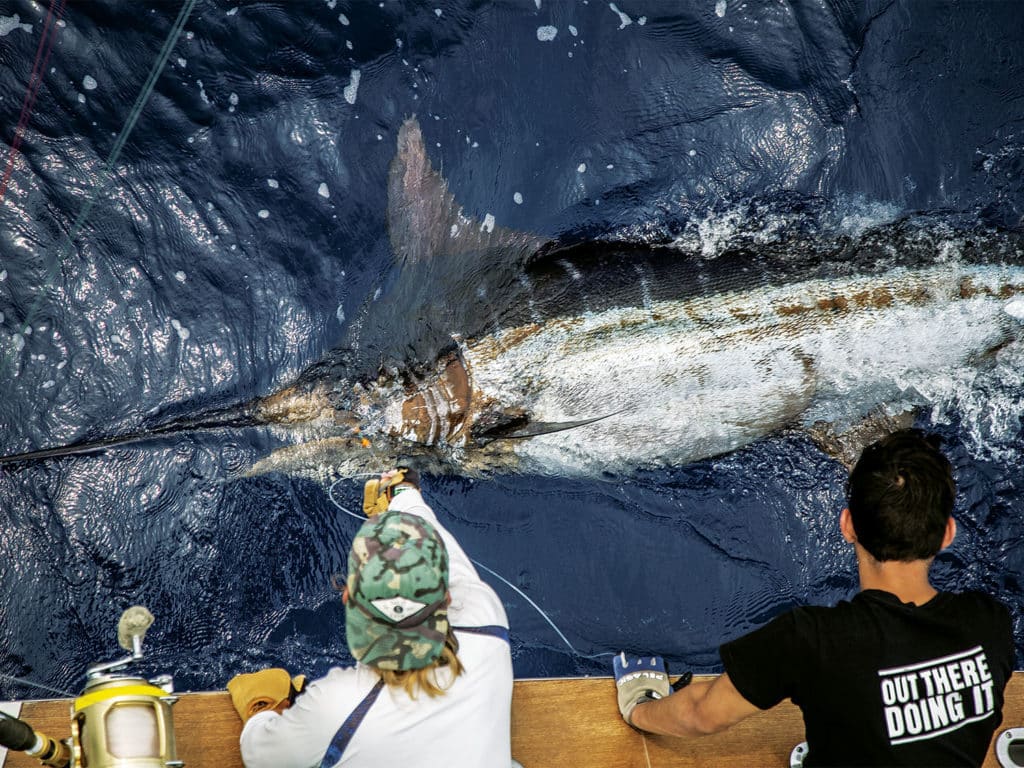
Two Days Off Walker’s
At Allen’s invitation, I joined him and his crew aboard Frigate, his 52-foot Viking Express, for a couple days of marlin fishing in late 2018. As we toured the island, it was clear that the land had regressed to a nearly pristine natural state, with just the shells of a few buildings remaining, like ghosts of the past—the chapel, however, remains mostly intact to this day, perhaps a sign of divine intervention. Beautiful wild bougainvillea had completely overgrown the foundation of the old hotel.
Allen was affable and down-to-earth right from the start as we toured the few remaining landmarks in his side-by-side utility vehicle before heading out to his fleet of boats anchored just offshore between Walker’s and Grand Cay.
Though it was well-past marlin season, we caught yellowfin tuna and jumped off a small blue on a lure in a half-day of fishing—yep, get up early, on the troll until noon, then head back to Allen’s 164-foot Westport, Gigi, for lunch.
That afternoon, I went out for a dive to 350 feet down on the reef in his three-person Triton submarine. The sub is housed on the back deck of his 180-foot Damen support vessel, Axis, along with an Icon A5 seaplane, which effectively turns the Dutch-built yacht into an aircraft carrier. To say it’s an impressive fleet is an understatement—especially when it’s complemented by the aerial force consisting of a Citation X+ jet, Cirrus SR22 and the aforementioned seaplane.
A 39-foot SeaVee, a pair of Hell’s Bay flats skiffs and several RIB inflatables round out the armada above, on and below the sea. And because the Damen holds 60,000 gallons of fuel and has the capacity to generate 20,000 gallons of fresh water a day, it’s a fleet that can remain self-sufficient in remote locations for a very long time.
There is no doubt that fishing drives the program. Allen enjoys running his own operation, which is one reason for the 52 Express. Whether sharing the helm with Capt. Ian Weber or in the cockpit waiting for the next blue marlin or big tuna to crash the spread, he loves every second of it. He also enjoys the thrill of chasing bonefish in the shallows.
“The numbers aren’t as large as some of the other places in the Bahamas, but the size of the bonefish at Walker’s makes up for it,” Allen relates. “There are some really big ones here.”
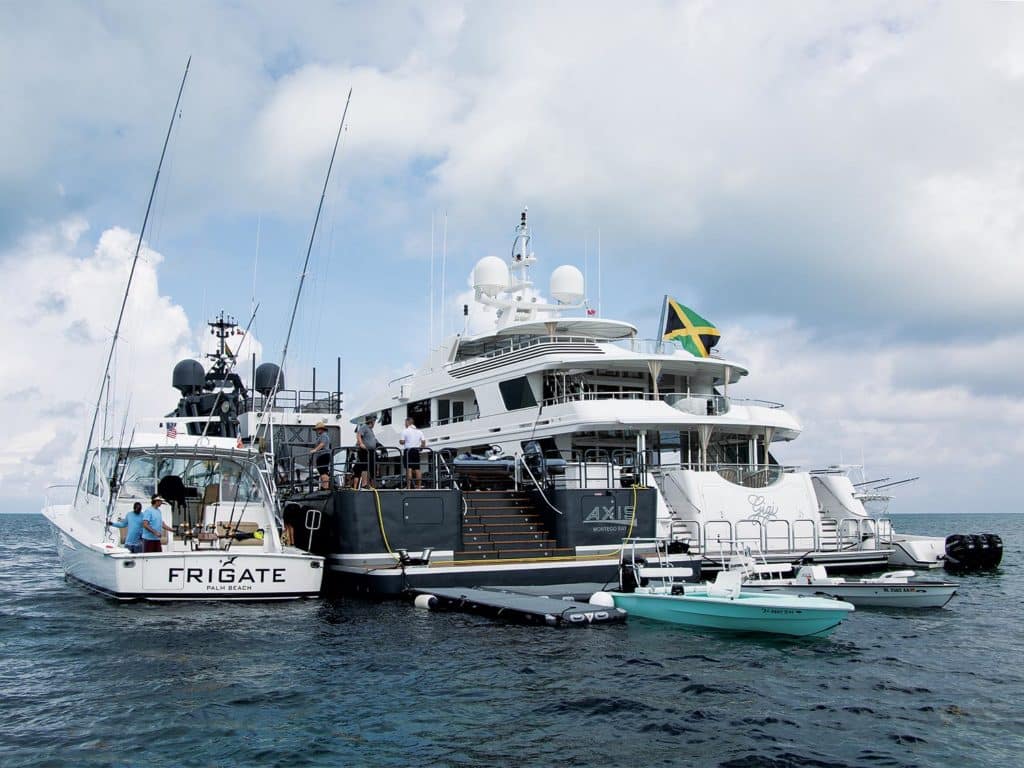
Giving Back
Allen also is concerned about the health of the oceans of the world—especially throughout his beloved Bahamas. One area of special interest is microplastics.
“We find them now in deepwater species like golden tilefish,” he says of these tiny pollutants. “Microplastics could dwarf larger concerns like mercury content in fish in the very near future.”
To that end, Allen also plans for Walker’s Cay to be home to an oceanic research facility, where studies could be performed with easy access to the depths of the Atlantic literally right out front.
“Until I sold my business, I was one of the largest manufacturers of trash bags,” he says. “Part of the give back for me is to study the impact of pollution in the ocean, not just along the island shores where we see it, but below the surface. We can take samples at different depths in the water column with the submarine. Plastic bottles and stuff are ugly to look at on the beach but they’re not really hurting the environment. The microplastics are what we should be concerned about. It moves. It floats.”
It’s Allen’s intention to have the island restored to its former glory as early as 2020—with fuel, water and power for visiting sport-fishers, liquid-natural-gas and renewable power solutions to offset diesel generators, a desalinization plant, villas or possibly a small boutique hotel, a new customs office and charter boats, among other improvements. As of this writing in the spring of 2019, Allen Exploration is involved in negotiations with the Bahamian government on permitting and other details before the start of any heavy lifting on the island.
Learn to rig the swimming mackerel for Bahamas blue marlin.
“I envision this rebuild as a partnership with the Bahamians to create jobs—good-paying and secure jobs that strengthen families and develop a lasting economic driver for future generations,” he says.
It isn’t often we have the opportunity to witness the rebirth of an iconic destination such as Walker’s Cay. The challenges are monumental, but if there is one person ideally suited to the task, it’s Carl Allen.




